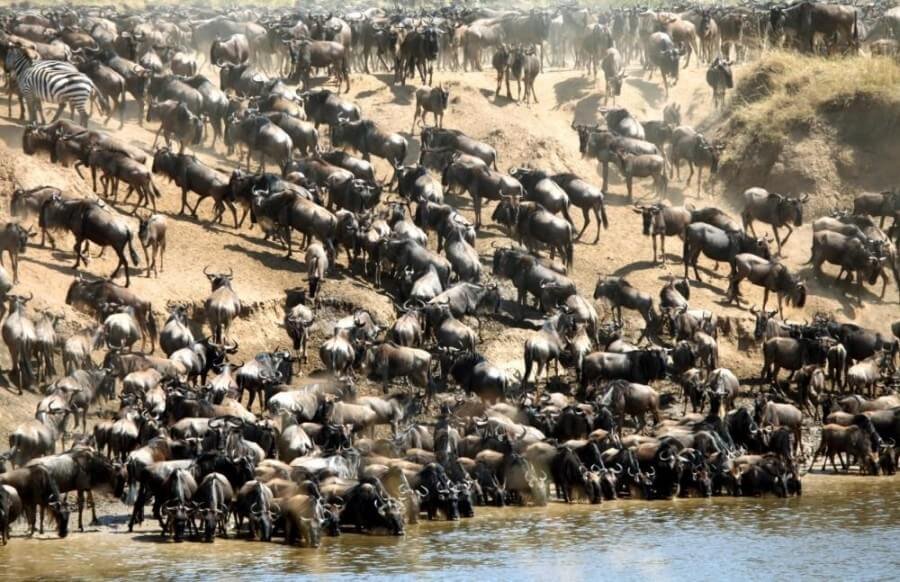The Phenomenal Masai Mara Migration Safari

Masai Mara is a place in Kenya – which enjoys an immense movement of animals. The migration of animals only happens once a year – generally between July and October. The Masai Mara migration involves wildebeest crossing the Mara River from the Serengeti plains in Tanzania to Mara in Kenya.
The annual wildebeest migration has made Masai Mara and Serengeti the hotspots in East Africa that every adventure enthusiast loves to visit there. The phenomenon is purely natural, spectacular, indescribable, and magical. Therefore, Masai Mara migration safari is a must for visitors vacationing in Kenya.
The Phenomena of Masai Mara Migration –
Remember one thing that, there’s neither any start nor end of migration in Masai Mara. It’s actually an endless process as the animals manoeuvre between the Mara and Serengeti ecosystem in search of food and water.
In short and simple words, Masai Mara migration is a relentless sequence of life and death with only starting being the moment the young ones are born.
1. Birthing Process –
The wildebeest gives birth to their young ones in a synchronized way. This is why thebirthing process sees around 400,000 calves being born between January and February every year.
The birthing period offers a feast for predators as lions and hyenas are usually seen scattered around to prey on the young wildebeests.
2. The Start of Migration –
After the birthing process ends, the grass plains of southern Serengeti start drying and the wildebeest starts moving towards the western woodlands, still within the Serengeti.
Their journey is generally dictated by their response to the weather. The wildebeests follow the rains, as the rain brings with the growth of new grass. At this time, their basic need is usually to find water and it’s also the time that first downpour of the heavy rains set in.
3. The Rut –
The rut process is also known as the mating period. It usually occurs between May and June every year. Around half a million cows are mated within one month. There’s a vicious fight between males, but despite the energetic duels, it’s the females that choose the males to mate them.
4. The Crossing –
The crossing of wildebeest is the moment usually awaited by many. This is the time when the wildebeests begin the Great Migration in Masai Mara.
This phenomenon usually happens between July and October every year. Their paths are cut by several rivers, but the greatest one is the Mara Rivers they’veto fight harder for their lives from the jaws of the crocodiles in the Mara River.
5. The Predators –
The wildebeest migrate in search of greener pastures and the fact that they’re constantly on the move and manage to stay away from predators. The wildebeest have a tendency to outmatch the number of predators as they usually move in large herds.
6. Ending the Process –
It may seem like the end of a phenomenon, but it’s the very beginning of another. Hence, migration in Masai Mara has no beginning or end. Now it happens by late October when the short rains begin, bringing in new flushes of growth.
During this time period, the wildebeests starts heading towards the south again with around 90% of females heavy with pregnancy for the new wildebeest migration.
Conclusion –
This summarizes the Masai Mara migration. To see this natural spectacle, you should embark on Masai Mara group joining safaris through Buy More Adventures to catch a glimpse of it.
For more details about Masai Mara migration safari, please stay connected with us on Facebook, Twitter, and Google Plus social networks.



 +254-20-2325654
+254-20-2325654 info@buymoreadventures.com
info@buymoreadventures.com